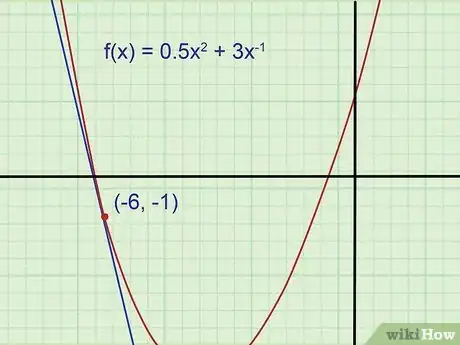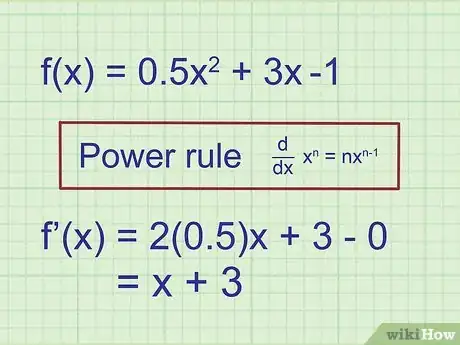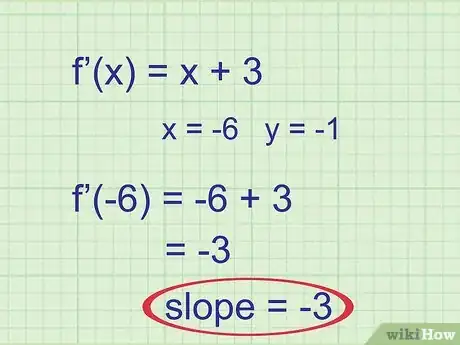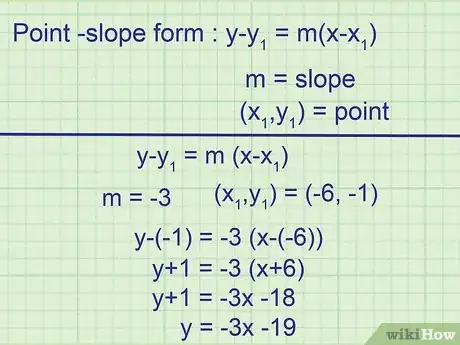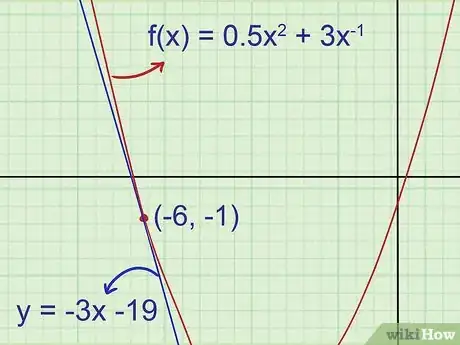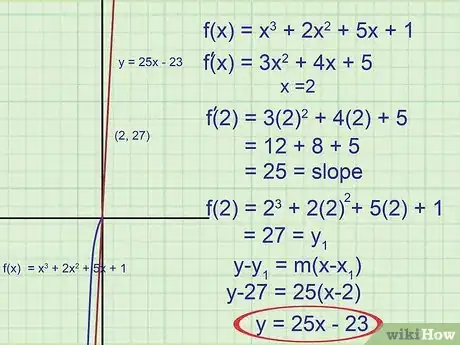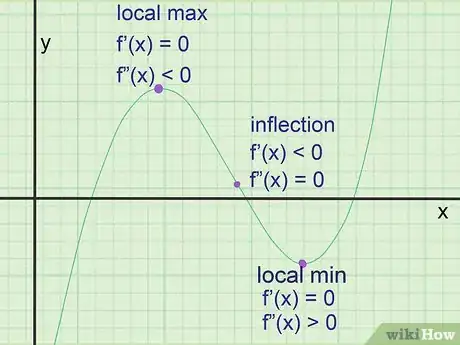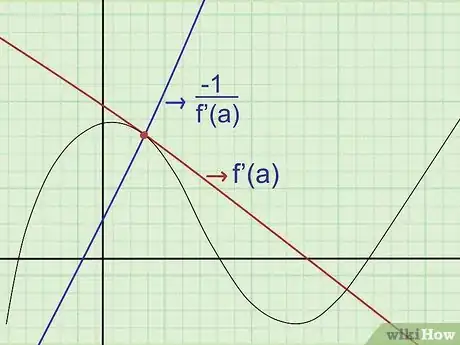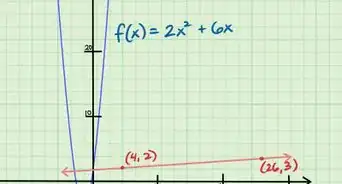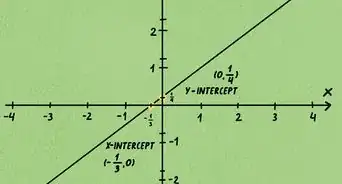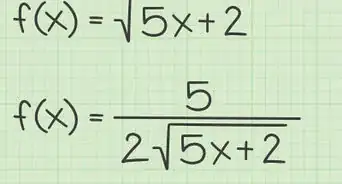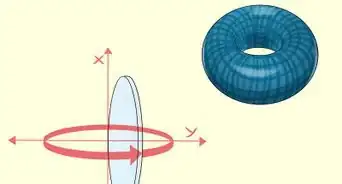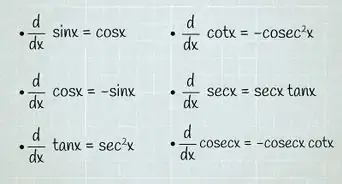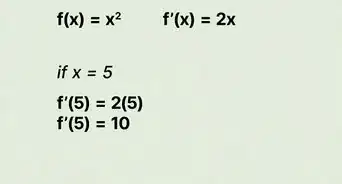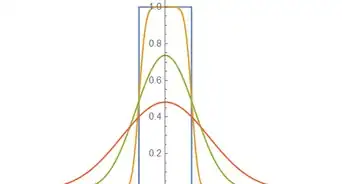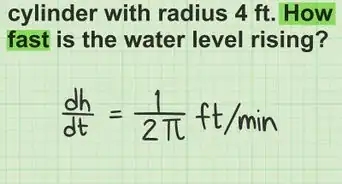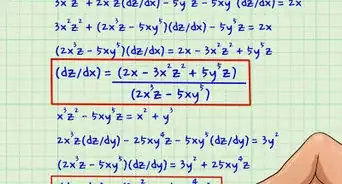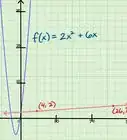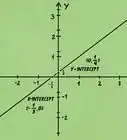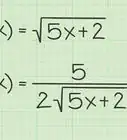This article was co-authored by Jake Adams. Jake Adams is an academic tutor and the owner of Simplifi EDU, a Santa Monica, California based online tutoring business offering learning resources and online tutors for academic subjects K-College, SAT & ACT prep, and college admissions applications. With over 14 years of professional tutoring experience, Jake is dedicated to providing his clients the very best online tutoring experience and access to a network of excellent undergraduate and graduate-level tutors from top colleges all over the nation. Jake holds a BS in International Business and Marketing from Pepperdine University.
wikiHow marks an article as reader-approved once it receives enough positive feedback. In this case, several readers have written to tell us that this article was helpful to them, earning it our reader-approved status.
This article has been viewed 1,172,138 times.
Unlike a straight line, a curve's slope constantly changes as you move along the graph. Calculus introduces students to the idea that each point on this graph could be described with a slope, or an "instantaneous rate of change." The tangent line is a straight line with that slope, passing through that exact point on the graph. To find the equation for the tangent, you'll need to know how to take the derivative of the original equation.
Steps
Finding the Equation of a Tangent Line
-
1Sketch the function and tangent line (recommended). A graph makes it easier to follow the problem and check whether the answer makes sense. Sketch the function on a piece of graph paper, using a graphing calculator as a reference if necessary. Sketch the tangent line going through the given point. (Remember, the tangent line runs through that point and has the same slope as the graph at that point.)
-
Example 1: Sketch the graph of the parabola . Draw the tangent going through point (-6, -1).
You don't know the tangent's equation yet, but you can already tell that its slope is negative, and that its y-intercept is negative (well below the parabola vertex with y value -5.5). If your final answer doesn't match these details, you'll know to check your work for mistakes.
-
Example 1: Sketch the graph of the parabola . Draw the tangent going through point (-6, -1).
-
2Take the first derivative to find the equation for the slope of the tangent line.[1] For function f(x), the first derivative f'(x) represents the equation for the slope of the tangent line at any point on f(x). There are many ways to take derivatives. Here's a simple example using the power rule:[2]
-
Example 1 (cont.): The graph is described by the function .
Recall the power rule when taking derivatives: .
The function's first derivative = f'(x) = (2)(0.5)x + 3 - 0.
f'(x) = x + 3. Plug any value a for x into this equation, and the result will be the slope of the line tangent to f(x) at the point were x = a.
Advertisement -
Example 1 (cont.): The graph is described by the function .
-
3Enter the x value of the point you're investigating.[3] Read the problem to discover the coordinates of the point for which you're finding the tangent line. Enter the x-coordinate of this point into f'(x). The output is the slope of the tangent line at this point.
-
Example 1 (cont.): The point mentioned in the problem is (-6, -1). Use the x-coordinate -6 as the input for f'(x):
f'(-6) = -6 + 3 = -3
The slope of the tangent line is -3.
-
Example 1 (cont.): The point mentioned in the problem is (-6, -1). Use the x-coordinate -6 as the input for f'(x):
-
4Write the tangent line equation in point-slope form. The point-slope form of a linear equation is , where m is the slope and is a point on the line.[4] You now have all the information you need to write the tangent line's equation in this form.
-
Example 1 (cont.):
The slope of the line is -3, so
The tangent line passes through (-6, -1), so the final equation is
Simplify to
-
Example 1 (cont.):
-
5Confirm the equation on your graph. If you have a graphing calculator, graph the original function and the tangent line to check that you have the correct answer. If working on paper, refer to your earlier graph to make sure there are no glaring mistakes in your answer.
- Example 1 (cont.): The initial sketch showed that the slope of the tangent line was negative, and the y-intercept was well below -5.5. The tangent line equation we found is y = -3x - 19 in slope-intercept form, meaning -3 is the slope and -19 is the y-intercept. Both of these attributes match the initial predictions.
-
6Try a more difficult problem. Here's a run-through of the whole process again. This time, the goal is to find the line tangent to at x = 2:
- Using the power rule, the first derivative . This function will tell us the slope of the tangent.
- Since x = 2, find . This is the slope at x = 2.
- Notice we do not have a point this time, only an x-coordinate. To find the y-coordinate, plug x = 2 into the initial function: . The point is (2,27).
- Write the tangent line equation in point-slope form:
If required, simplify to y = 25x - 23.
Solving Related Problems
-
1Find the extreme points on a graph. These are points where the graph reaches a local maximum (a point higher than the points on either side), or local minimum (lower than the points on either side). The tangent line always has a slope of 0 at these points (a horizontal line), but a zero slope alone does not guarantee an extreme point. Here's how to find them:[5]
- Take the first derivative of the function to get f'(x), the equation for the tangent's slope.
- Solve for f'(x) = 0 to find possible extreme points.
- Take the second derivative to get f''(x), the equation that tells you how quickly the tangent's slope is changing.
- For each possible extreme point, plug the x-coordinate a into f''(x). If f''(a) is positive, there is a local minimum at a. If f''(a) is negative, there is a local maximum. If f''(a) is 0, there is an inflection point, not an extreme point.
- If there is a maximum or minimum at a, find f(a) to get the y-coordinate.
-
2Find the equation of the normal. The "normal" to a curve at a particular point passes through that point, but has a slope perpendicular to a tangent. To find the equation for the normal, take advantage of the fact that (slope of tangent)(slope of normal) = -1, when they both pass through the same point on the graph.[6] In other words:
- Find f'(x), the slope of the tangent line.
- If the point is at x = a, find f'(a) to find the slope of the tangent at that point.
- Calculate to find the slope of the normal.
- Write the normal equation in slope-point form.
Expert Q&A
Did you know you can get expert answers for this article?
Unlock expert answers by supporting wikiHow
-
QuestionHow do you calculate the slope of a tangent line?
 Jake AdamsJake Adams is an academic tutor and the owner of Simplifi EDU, a Santa Monica, California based online tutoring business offering learning resources and online tutors for academic subjects K-College, SAT & ACT prep, and college admissions applications. With over 14 years of professional tutoring experience, Jake is dedicated to providing his clients the very best online tutoring experience and access to a network of excellent undergraduate and graduate-level tutors from top colleges all over the nation. Jake holds a BS in International Business and Marketing from Pepperdine University.
Jake AdamsJake Adams is an academic tutor and the owner of Simplifi EDU, a Santa Monica, California based online tutoring business offering learning resources and online tutors for academic subjects K-College, SAT & ACT prep, and college admissions applications. With over 14 years of professional tutoring experience, Jake is dedicated to providing his clients the very best online tutoring experience and access to a network of excellent undergraduate and graduate-level tutors from top colleges all over the nation. Jake holds a BS in International Business and Marketing from Pepperdine University.
Academic Tutor & Test Prep Specialist
-
QuestionHow do I find the equations of 2 lines that are tangent to a graph given the slope?
 Community AnswerThe equation for a line is, in general, y=mx+c. To find the equations for lines, you need to find m and c. m is the slope. For example, if your line goes up two units in the y direction, for every three units across in the x direction, then m=2/3. If you have the slope, m, then all you need now is c. To find c in any line, you can use any (x,y) points you know. In the case of a line that is tangent to a graph, you can use the point (x,y) where the line touches the graph. If you use that x and that y and the slope m, you can use algebra to find c. y=mx+c, so, c=y-mx. Once you have c, you have the equation of the line! Done.
Community AnswerThe equation for a line is, in general, y=mx+c. To find the equations for lines, you need to find m and c. m is the slope. For example, if your line goes up two units in the y direction, for every three units across in the x direction, then m=2/3. If you have the slope, m, then all you need now is c. To find c in any line, you can use any (x,y) points you know. In the case of a line that is tangent to a graph, you can use the point (x,y) where the line touches the graph. If you use that x and that y and the slope m, you can use algebra to find c. y=mx+c, so, c=y-mx. Once you have c, you have the equation of the line! Done. -
QuestionHow do I find the equation of the line that is tangent to the graph of f(x) and parallel to the line y = 2x + 3?
 Community AnswerParallel lines always have the same slope, so since y = 2x + 3 has a slope of 2 (since it's in slope-intercept form), the tangent also has a slope of 2. Now you also know that f'(x) will equal 2 at the point the tangent line passes through. Differentiate to get the equation for f'(x), then set it equal to 2. Now you can solve for x to find your x-coordinate, plug that into f(x) to find the y-coordinate, and use all the information you've found to write the tangent line equation in point-slope form.
Community AnswerParallel lines always have the same slope, so since y = 2x + 3 has a slope of 2 (since it's in slope-intercept form), the tangent also has a slope of 2. Now you also know that f'(x) will equal 2 at the point the tangent line passes through. Differentiate to get the equation for f'(x), then set it equal to 2. Now you can solve for x to find your x-coordinate, plug that into f(x) to find the y-coordinate, and use all the information you've found to write the tangent line equation in point-slope form.
References
- ↑ Jake Adams. Academic Tutor & Test Prep Specialist. Expert Interview. 20 May 2020.
- ↑ https://www.mathsisfun.com/calculus/derivatives-rules.html
- ↑ Jake Adams. Academic Tutor & Test Prep Specialist. Expert Interview. 20 May 2020.
- ↑ https://gato-docs.its.txst.edu/jcr:48ee831e-5969-4419-b9f8-820925a1b46a/Finding%20the%20Equation%20of%20a%20Tangent%20Line.pdf
- ↑ https://www.youtube.com/watch?v=QN9DUZFpIZ4
- ↑ https://www.khanacademy.org/math/in-in-grade-12-ncert/xd340c21e718214c5:continuity-differentiability/xd340c21e718214c5:derivatives-capstone/e/applications-of-derivatives--tangent-and-normal-lines
About This Article
To find the equation of a tangent line, sketch the function and the tangent line, then take the first derivative to find the equation for the slope. Enter the x value of the point you’re investigating into the function, and write the equation in point-slope form. Check your answer by confirming the equation on your graph. For examples of tangent line equations, keep reading!
